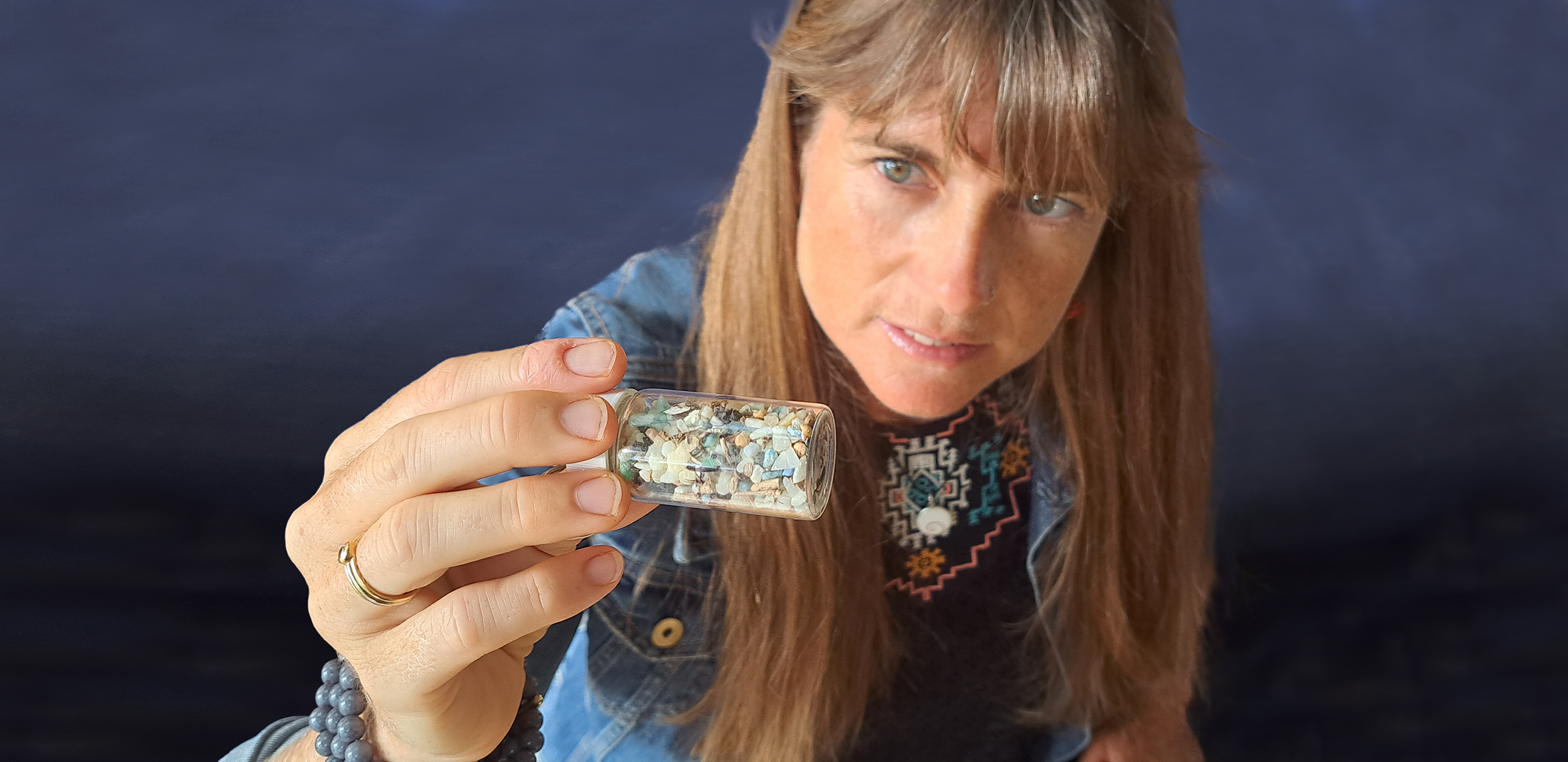
Buying clothing, rugs and other fabric products marketed as "sustainable," "biodegradable" or "recycled" seems, on the surface, to be a better choice for the environment. But under the surface – specifically, in the ocean – those textiles are proving that plastic always remains a problem. A new study from UC San Diego’s Scripps Institution of Oceanography has determined that only natural fibers degrade in the marine environment, while plastic fabrics remain intact one year later.
Lead author Sarah-Jeanne Royer (pictured) conducted an experiment off the Ellen Browning Scripps Memorial Pier and found that natural and wood-based cellulose fabrics degraded within a month. Synthetic textiles, including so-called "compostable" plastic materials like polylactic acid (PLA), and the synthetic portions of textile blends, showed no signs of degradation even after more than a year submerged in the ocean.
This is especially problematic as clothing, rugs and other fabric-based goods are increasingly made with plastic fibers and/or plastic blends – in 2020, an estimated 59.7 million tons entered the environment, creating "invisible" plastic pollution by shedding microfibers during wearing and washing. That number has grown to an estimated 68 million tons, about 62 percent of all textiles produced. Fast fashion products are also piling up in landfills globally at an alarming rate where those plastic fibers will remain for decades to centuries.

Cage design used for the seafloor experiment that took place off the Ellen Browning Scripps Memorial Pier at Scripps Institution of Oceanography in 2019. Photo courtesy: Sarah-Jeanne Royer
Bio-based plastics made from renewable natural resources such as cornstarch or sugar cane have been marketed as a potential solution to the plastic problem. PLA is one such polymer in the bio-based plastics market, often labeled as biodegradable and compostable. The team chose this textile for the study given its extensive use as a replacement for oil-based materials.
“This study shows the need for standardizing tests to see if materials promoted as compostable or biodegradable actually do biodegrade in a natural environment,” said Royer. “What might biodegrade in an industrial setting does not necessarily biodegrade in the natural environment and can end up as marine and environmental pollutants.”
For the experiment, 10 different types of fabrics commonly used in the textile industry were used:
- wood-based cellulose (known commercially as Lyocell, Modal, and Viscose);
- natural cellulose (organic virgin cotton and non-organic virgin cotton);
- bio-based plastic (PLA);
- oil-based plastic (polyethylene terephthalate and polypropylene),
- fabric blends of Lyocell mixed with polyester and polypropylene.

Disintegration time in days for five selected types of material exposed to coastal waters at the Ellen Browning Scripps Memorial Pier in La Jolla, Calif.
Fiber blends, which interweave natural fiber strands with bio- or oil-based plastic strands, are often promoted as a more sustainable alternative to textiles made entirely from synthetic plastics. This study showed, however, that only the natural part of the fiber degraded, with the plastic portion of the blend remaining intact.
"This comparative study highlights how crucial our language is around plastics,” said Scripps marine biologist Dimitri Deheyn, senior author of the study. “Indeed, a bioplastic like PLA, commonly assumed to be biodegradable in the environment because it contains the prefix ‘bio,’ is actually nothing like that."
Given these results, Royer and the team hope consumers will become more aware of the power of their own choices.
“Consumers who are concerned about microfiber plastic pollution should be mindful of the materials they are buying,” said Royer. “We should all aim to buy fewer garments, opt for high- quality, cellulose-based materials like cotton, merino or wool that will last longer, or look to more circular and sustainable options that repurpose items like clothing swaps and Buy Nothing groups.”
